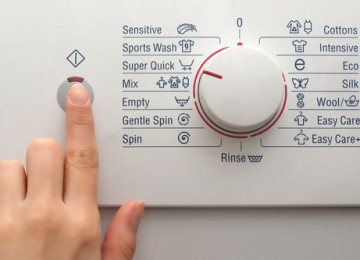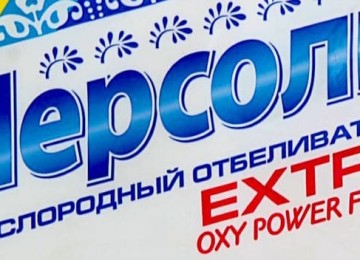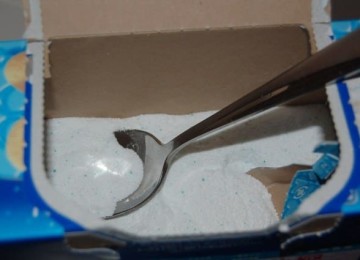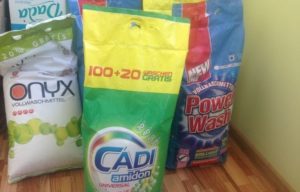 Not long ago, phosphate-free washing powders began to appear on store shelves. Many housewives were skeptical about them. Phosphate-free powder has practically no smell, does not form a lot of foam. Some housewives have come to the conclusion that such detergents will not completely remove stains, while the price at first glance is far from democratic. So is there any point in paying more?
Not long ago, phosphate-free washing powders began to appear on store shelves. Many housewives were skeptical about them. Phosphate-free powder has practically no smell, does not form a lot of foam. Some housewives have come to the conclusion that such detergents will not completely remove stains, while the price at first glance is far from democratic. So is there any point in paying more?
In a number of European countries, the content of phosphates and other potentially hazardous substances for health and the environment in detergents and cleaning products is established at the legislative level. And there is an explanation for this.
What are phosphates?
Phosphates are chemical compounds that improve cleaning properties and soften water. However, phosphates are very dangerous for human health. Since phosphates are practically not removed from fabric fibers during rinsing, they enter the blood through the skin and accumulate in the body. Phosphates in the human body cause allergic reactions and dermatitis, contribute to the development of skin diseases and cancerous tumors, and lead to infertility. Such substances are especially dangerous for delicate children's skin.
In our country there are no legislative measures regulating the content of substances hazardous to health in detergents. To protect yourself and your loved ones from the effects of harmful substances contained in laundry detergents, let’s look at the composition of modern laundry detergents.
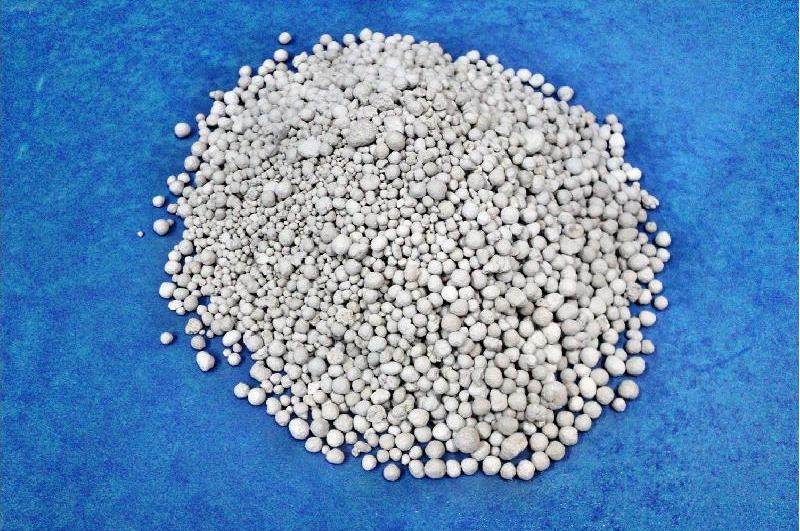
What does washing powder consist of?
Surfactant – surfactants that dissolve stains. In addition to the visible stain-removing effect, such substances contribute to the destruction of fibers and color fading. At a dosage of 5-15%, surfactants are safe for the human body.
Phosphates – chemical compounds that are aggressive to the environment and human health. They break down stains and soften hard water. In Germany, Japan, Switzerland and a number of other countries, the use of phosphates in detergents is prohibited by law. In the UK and France, the permissible phosphate content is no more than 12%.
Phosphonates – substances similar in properties to phosphates, but less dangerous to human health. Phosphonates are often used as phosphate analogues in the production of detergents.
Zeolites – chemicals that break down contaminants and remove them from tissues. Eco-friendly and safe for human health when used in reasonable doses. If the volume of zeolites does not exceed 1/3 of the volume of washing powder, then such powder is considered safe for health.
Enzymes – organic compounds that contribute to the breakdown of proteins and fats, i.e. help get rid of most stains. Safe for health.
Sulfates – salts of sulfuric acid. In fact, sulfates do not have stain-removing properties, but only to some extent enhance the effect of surfactants.Sulfate is a cheap additive that only adds weight to the detergent. Ammonium sulfate is most often used in the production of laundry detergents.
Perfume substances, flavors, fragrances give a pleasant aroma to things after washing. If the powder is dosed incorrectly or is poorly rinsed, it can cause allergic reactions, itching, and exacerbation of bronchial asthma.
Bleaching agents added to laundry detergents to make things whiter. The most commonly used are peroxide bleaches, which in an alkaline environment activate oxidizing properties and destroy stains. These substances also have strong disinfectant properties.
In addition, the composition may include chlorine, dyes, solvents, substances that reduce foaming, preservatives, and antioxidants.
Some of these substances are hazardous to health, others are neutral, and the effect of some has not been fully studied.
Phosphate-free washing powder: advantages
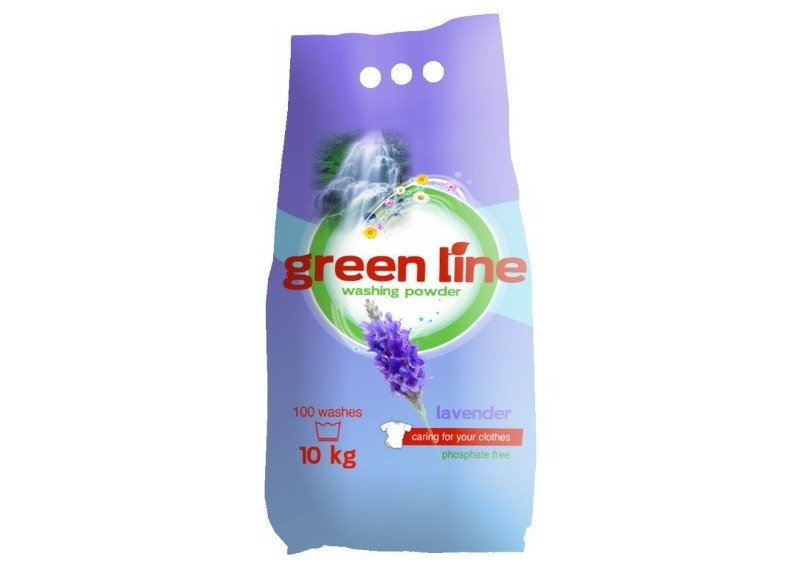
In European countries, phosphate-free washing powders are widely used. This is not surprising, since such powders have a number of advantages:
- Safety. The absence of phosphates in the laundry detergent reduces the risk of skin rashes and allergic reactions. All compounds in the laundry detergent are washed out of the laundry fibers during the rinsing process.
- Economical. Thanks to the substances included in the composition, such detergents are produced in concentrated form. Some of them must first be dissolved in hot water. The instructions indicate how much is needed per wash. There must be a measuring cup in the box.
- Efficiency.To achieve the desired result when washing clothes, it is important to carefully read the instructions for use and select the appropriate washing mode. Research has proven that phosphate-free washing powders wash effectively even in cold water.
- Unlimited shelf life. As a rule, such products do not have an expiration date, which is very convenient when used, for example, in the countryside.
How to properly use phosphate-free powders
Since phosphate-free products have a composition different from the powder we are used to, you must first read the instructions.
- Some products must first be diluted in boiling water and then added to the laundry. Most products are concentrated, so use the dosage according to the instructions, do not pour it on the eye.
- Pre-soak items before washing to remove any remaining phosphates in the wash.
- If bleaches or conditioners are used with phosphate-free products, make sure they do not contain chlorine or phosphates, otherwise the full effect of the phosphate-free powder will be lost. In addition, due to the wrong combination of detergents, the item can be hopelessly damaged.
Phosphate-free powders for washing baby clothes

To protect your child from allergic reactions and skin rashes, it is necessary to take into account many different factors, including the choice of washing powder.
Children's delicate skin especially needs care and attention. It is important to exclude exposure to aggressive factors. A fragile body is susceptible to any harmful substances. There may be cases when a rash appears on the child’s body and the temperature rises. Neither parents nor pediatrician can determine the cause.It turns out that children's clothes and underwear were washed with washing powder, which contains dangerous components.
To avoid problems with your baby’s health, carefully read the composition of the detergent before purchasing.
Below is a rating of safe detergents for washing baby clothes.
- Pigeon (Japanese), 1 kg pack.
Economical, 50 g is enough. for one start of the washing machine (55 kg of laundry). The price is attractive compared to similar products. The composition contains natural ingredients, without fragrances. When washing, it forms little foam and rinses well. The linen is soft and fresh. Removes baby stains well.
- Amway Home liquid laundry detergent for children (USA), 1 l.
According to the manufacturer, a liter bottle is enough for 33 washes. The product has been tested by dermatologists and does not contain substances hazardous to human health and the environment. Before washing, you need to dissolve a certain amount of the product in boiling water. Does not contain bleaches. Safe for washing baby clothes from the first days of life.
- Lumme (Finnish), pack 1 kg.
Children's phosphate-free powder based on vegetable detergents, does not contain fragrances. Suitable for washing all types of fabrics. Safe for children from the first days of life. This powder is completely hypoallergenic and safe for people prone to allergies and asthma sufferers.
As indicated on the packaging, one wash with a full load of the washing machine will require 75 grams. facilities.
Which phosphate-free powder is better?
On store shelves you can find a variety of laundry detergents. How to make a choice and not be disappointed in the purchase?
Here is a list of the most popular laundry detergents that are not harmful to health.

Japanese phosphate-free powder
- German phosphate-free laundry detergents are widespread on the market and are rightfully considered the safest for health. Factories pay great attention to quality control of finished products. By purchasing these products, you will protect yourself and your family from exposure to harmful substances contained in laundry detergents. Among the most common, I would like to note the following brands: Bio Mio (contains cotton extract), Klar Eco Sensitive (based on soap nuts), Sodasan Ecological Color (made from natural soap, contains herbal extracts and citric acid).
- Among the products supplied from France, concentrated EcoDoo powder should be highlighted. It contains zeolites and natural oils. Suitable for those who are prone to allergies, in the absence of a reaction to the components included in the composition.
- In Japan, the quality of washing powder is checked by government agencies. The use of harmful substances in the production of washing powder is strictly prohibited. Among the Japanese powders, the following brands should be noted: Washen, Tokiko Japan, SHABONDAMA SNOUL.
- Russian powder, which does not contain phosphates, is produced under the brand name “Our Mother”. This powder is soap shavings made from natural soap. The composition contains oxygen enzymes that perfectly remove stains even at low temperatures. The product is completely hypoallergenic and suitable for washing baby clothes. Among the Russian-made powders that are safe for health, it is worth noting the product under the Umka brand.
Which powder to use is your choice. The health of loved ones is priceless!







